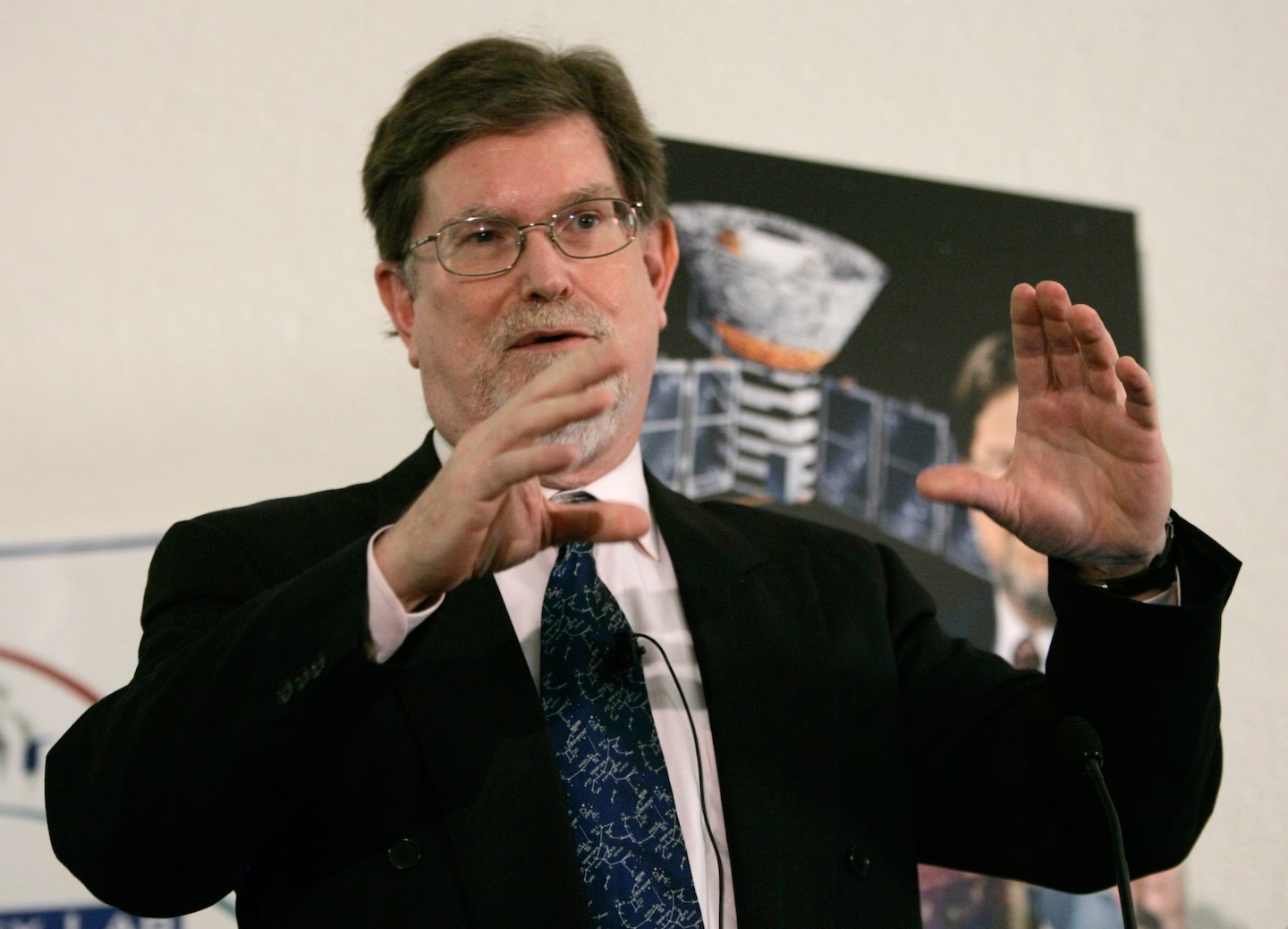George Smoot, a Nobel Prize-winning physicist who helped take an image of the universe in its infancy, providing strong support for the Big Bang theory and new insight into the origins of the cosmos, died Sept. 18 at his home in Paris. He was 80.
5.10.2025
While working at Berkeley Lab, he collaborated with John Mather on a NASA research study probing the origins of the universe. The two physicists won a Nobel Prize.

George Smoot, a physics professor at the University of California at Berkeley, in 2006, the year he won the Nobel Prize. (Ben Margot/AP)
While working as a researcher at the Lawrence Berkeley National Laboratory in California, Dr. Smoot served as the principal investigator behind a NASA satellite instrument that captured the equivalent of a cosmic sonogram — a snapshot of the universe about 380,000 years after it formed, showing the fuzzy beginnings of future galaxies and stars.
The research project, which was also led by NASA scientist John C. Mather, provided empirical evidence that the universe has been expanding and evolving, in keeping with the Big Bang theory of the cosmos.
“If you’re religious, it’s like seeing God,” Dr. Smoot said at a packed news conference in 1992, discussing the group’s findings. Physicist Stephen Hawking deemed it “the discovery of the century, if not of all time.”
For their work on the Cosmic Background Explorer, the NASA satellite known as COBE, Dr. Smoot and Mather were awarded the 2006 Nobel Prize in physics. The prize committee credited the scientists with helping transform cosmology, the study of the universe’s origins, into “a precise science,” and for paving the way for “even clearer images” of the cosmic microwave background radiation, a relic of the universe’s earliest moments.
The research of Dr. Smoot and his colleagues offered precise support for the Big Bang theory, now the most widely accepted scientific explanation of the universe’s origins.
“This is kicking off a phase where we are actually starting to have a scientific explanation of how the universe was being created and developed,” Dr. Smoot said after winning the Nobel. The advances, he added, were “a unifying thing for all of humanity.”
According to the Big Bang theory, the cosmos initially existed in an extremely hot, dense state, which has since expanded into galaxies and stars and cooled to 2.7 Kelvin, just above absolute zero. But the temperature, according to the theory, should vary slightly across the universe, in minuscule differences that had not previously been observed.
Working with NASA scientists as well as physicist Luis Alvarez, a fellow Nobel laureate, Dr. Smoot developed an instrument to detect minute temperature differences across the sky. In 1976, the researchers flew a differential microwave radiometer on a high-altitude U-2 spy plane, which found one side of the sky was warmer in one direction and colder in another. The experiment, along with other field work by Dr. Smoot, helped lay the groundwork for the NASA COBE mission that brought him a share of the Nobel Prize.
Launched in 1989, the COBE satellite scanned the cosmos about 560 miles above the Earth’s surface. In its first nine minutes of observations, the satellite had already enhanced our understanding of the universe by registering a black-body spectrum, a finding that aligned with the view that the universe evolved from a primordial fireball.
By 1991, Dr. Smoot and the team were collecting enough data from the instruments to robustly map small temperature variations, in the range of a hundred-thousandth of a degree from point to point, according to a Nobel press release. The temperature differences helped illuminate how galaxies and other cosmic structures came into being, and resulted in the image that Dr. Smoot likened to the face of God.
“Talking about cosmology, you can’t help making the connection to religion,” he said in a 1994 interview. “In all religions, all cultures, there’s always, ‘In the beginning.’”
George Fitzgerald Smoot III was born in Yukon, Florida, on Feb. 20, 1945. His father was a hydrologist for the U.S. Geological Survey, and his mother was a science teacher and principal. His father’s job took the family to Alaska, where Dr. Smoot “discovered a new way of life more directly linked with nature,” according to his website.
The family later moved to Upper Arlington, Ohio, just outside of Columbus, where Dr. Smoot graduated from high school. He studied math and physics at MIT, received a doctorate in particle physics from the school in 1970 and soon joined Berkeley Lab. He was appointed to the physics faculty at the University of California at Berkeley in 1994.
Dr. Smoot used $500,000 of his Nobel Prize winnings to help launch the Berkeley Center for Cosmological Physics. Beginning in 2009, he worked as a physics professor at what is now Paris Cité University.
An early marriage ended in divorce. Survivors include his partner, Nóra Csiszár, and a sister.
Scientists are often stereotyped as shy and quiet, but that did not describe Dr. Smoot, said Edward “Rocky” Kolb, a University of Chicago cosmologist. “He didn’t talk down to the public, and I think that’s important,” Kolb said. “He was a vibrant person. He had a big personality.”
Dr. Smoot made cameos on the CBS sitcom “The Big Bang Theory” and, in 2008, appeared on the game show “Are You Smarter than a 5th Grader?” becoming one of only two American contestants to win the $1 million grand prize. He also partnered with author Keay Davidson to write a 1993 book, “Wrinkles In Time,” about his scientific career.
“The truth and treasure of the universe is its own existence,” he wrote, “and our quest for that truth and treasure will be eternal, like the universe itself.”
Quelle: The Washington Post
